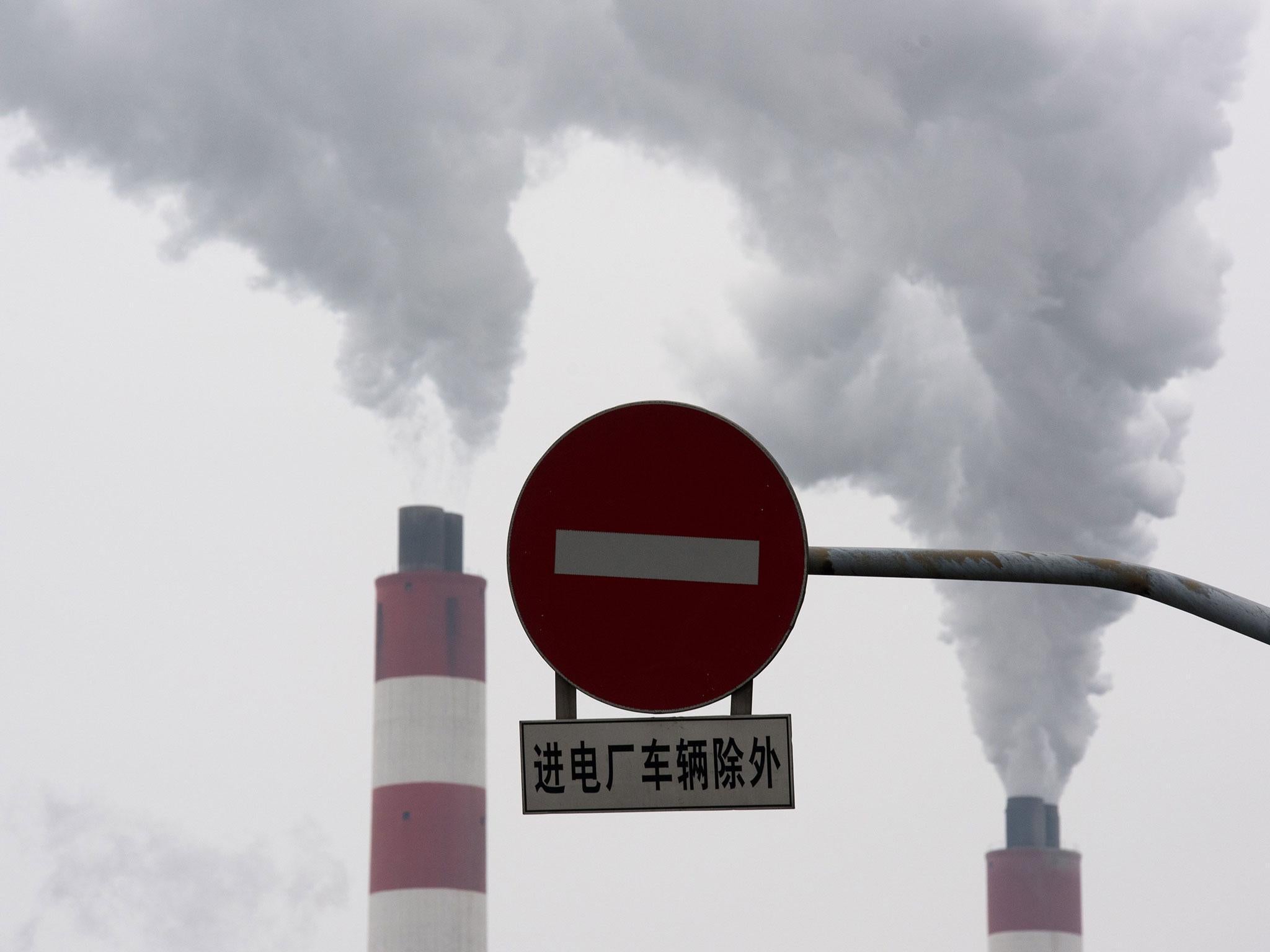Global carbon emissions stall after US and China reduce coal use
But scientists urged caution, saying its too early to say whether it is a permanent trend or temporary blip

Worldwide emissions of heat-trapping carbon dioxide have flattened out in the past three years, a new study showed on Monday, raising hopes that the world is nearing a turning point in the fight against climate change.
However, the authors of the study cautioned it’s unclear whether the slowdown in CO2 emissions, mainly caused by declining coal use in China, is a permanent trend or a temporary blip.
“It is far too early to proclaim we have reached a peak,” said co-author Glen Peters, a senior researcher at the Centre for International Climate and Environmental Research in Oslo.
The study, published in the journal Earth System Science Data, says global CO2 emissions from fossil fuels and industry is projected to grow by just 0.2 per cent this year.
That would mean emissions have levelled off at about 36 billion metric tonnes in the past three years even though the world economy has expanded, suggesting the historical bonds between economic gains and emissions growth may have been severed.
“This could be the turning point we have hoped for,” said David Ray, a professor of carbon management at the University of Edinburgh, who was not involved with the study. “To tackle climate change those bonds must be broken and here we have the first signs that they are at least starting to loosen.”
The authors of the study attributed the slowdown mainly to a decrease in Chinese coal consumption since 2012. Coal is a major source of CO2 emissions.
Chinese emissions were down 0.7 per cent in 2015 and are projected to fall 0.5 per cent in 2016, the researchers said, though noting that Chinese energy statistics have been plagued by inconsistencies.
Peters said it remains unclear whether the Chinese slowdown was due to a restructuring of the Chinese economy or a sign of economic instability.
“Nevertheless, the unexpected reductions in Chinese emissions give hope that the world’s biggest emitter can deliver much more ambitious emission reductions,” he said.
China, which accounts for almost 30 per cent of global carbon emissions, pledged to peak its emissions around 2030 as part of the global climate pact adopted in Paris last year. Many analysts say China’s peak is likely to come much earlier – and may already have occurred.
“The continued decline of China's CO2 emissions, combined with knowledge of structural change in the energy system, does indicate that CO2 emissions from China may have peaked, however a few more years of data is needed to confirm this,” said Bill Hare, of Climate Analytics, a separate group that monitors global emissions.
However, even if Chinese emissions have stabilised, emissions in India and other developing countries could push global emissions higher again. India’s emissions rose 5 per cent in 2015, the study said.
The election of Donald Trump as president of the United States – the world’s No 2 carbon polluter – could also have an impact.
US emissions fell 2.6 per cent last year and are projected to drop 1.7 per cent this year, as natural gas and renewables displace coal in power generation, the study showed. But it’s unclear whether those reductions will continue under Trump, who has pledged to roll back the Obama administration’s environmental policies, including the Clean Power Plan, which was meant to reduce carbon pollution from US power plants.
Other researchers not affiliated with the study stressed that it's not enough for global emissions to stabilise; they need to drop toward zero for the world to meet the goals of the Paris deal.
“Worryingly, the reductions pledged by the nations under the Paris Agreement are not sufficient to achieve this,” said climate scientist Chris Rapley of University College London.
The agreement calls for limiting warming to 2 degrees Celsius (3.6 degrees Fahrenheit) or even 1.5 degrees C (2.7 degrees F) compared with pre-industrial times.
Associated Press
Join our commenting forum
Join thought-provoking conversations, follow other Independent readers and see their replies
Comments
Bookmark popover
Removed from bookmarks